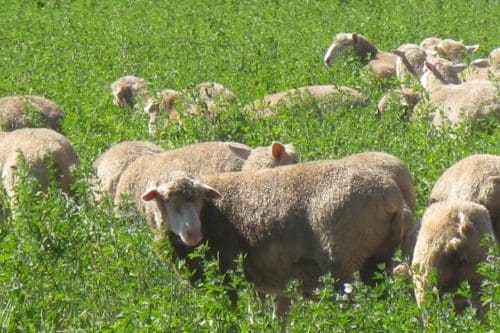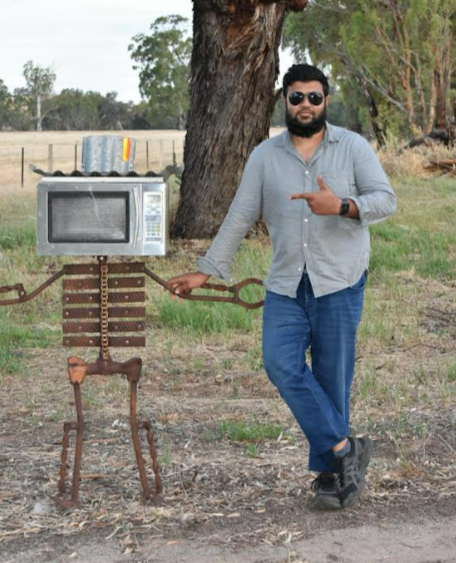
Sheep love grazing green lucerne, but research has shown they also love it warm and crispy. Image – Agriculture Victoria.
UNIVERSITY of Melbourne researchers have discovered that sheep love warm crispy lucerne fresh out of the microwave.
A new study has shown that feeding microwave heat-treated forage hay improves sheep dry matter intake and apparent digestibility.
Also in what is potentially good news for lot feeders, the average daily liveweight gain of sheep fed microwave-treated lucerne hay increased by 8 percent compared to results from animals fed untreated lucerne hay.
The study by PhD scholar Md Safiqur Rahaman Shishir at the University of Melbourne, showed microwave heat treatment improves digestibility by 8pc in sheep, and may lead to improved weight gain. His supervisory committee team included Dr Paul Cheng, associate Professor Graham Brodie, and associate Professor Brendan Cullen.
A previous small-scale in vitro digestibility study suggested that microwave heat treatment improves lucerne hay dry matter digestibility by 15pc.
Forage hay is the conserved form of roughage, mostly used in sheep’s diet during drought in Summer and Winter. However, its use contributes mainly to maintenance due to comparatively lower digestibility than fresh forage.
Sheep loved the heated crispy lucerne hay

To microwave is the way, says sheep feed researcher and PhD scholar Md Safiqur Rahaman Shishir.
Mr Shishir said the lucerne hay was heated to 85-90 degrees Celsius for 240 seconds and the wheat hay for 120 seconds.
“We treated approximately 600 kg hay for this trial.
“Usually feed intake increases when we fed microwave-treated lucerne hay,” he said.
Microwave treatment made the lucerne hay crispy “and sheep loved it,” he said.
In the case of microwave-treated wheat, the taste was moderately strong and the difference in feed intake was insignificant.
Mr Shishir said microwave heat treatment is a non-ionic electromagnetic processing technology that is quick, energy-efficient, and safer to handle.
“Based on our literature study and understanding, we have developed a hypothesis that microwave energy interacts with available inter and intracellular water.
“Eventually it converts them into steam and creates pressure in the cell wall that leads to cellular rupture causes microstructure destruction at the cellular level,” he said.
“Therefore, the accessibility to cell nutrients might be increased.”
Dr Cheng, the principal supervisor of Mr Shishir, said they had done some electron microscopic imaging of microwave-treated and non-treated hays.
“The result suggested that the hypothesis of microstructure destruction due to microwave heat treatment is visible and significantly higher than the non-treated one,” he said.
The research group conducted an apparent digestibility and nitrogen balance trial with sheep to see the actual effect of feeding microwave treated forage hay. This found that apparent digestibility substantially improved by 8pc when microwave lucerne was fed to sheep. However, other microwave-treated forage hay (wheat hay) did not show any effect when fed to sheep.
“If you consider small numbers of sheep, the profit improvement due to feeding microwave-treated lucerne hay looks minimal, but the importance can be more visible when applied on farm scale, which is possible with higher microwave capacity,” Dr Cheng said.
The research group believes that more trials are needed for further validation of the findings.
“Research on microwave heat treatment of forage hay is still in the initial stage,” Dr Cheng said.
“Despite this study showing microwave heat treatment to be effective for improving forage hay dry matter intake and digestibility, a large number of trials is needed for further validation.
“However, this PhD project showed a path for future research in this area, particularly in microwave time and power selection,” he said.
Mr Shishir said the microwave work is initial stage research. However, in a previous study led by associate Professor Brodie, a 25kg bag of lucerne hay was microwaved and a simple economic analysis showed that microwave treatment could provide more profit. Click here to read the published paper on this trial.

HAVE YOUR SAY